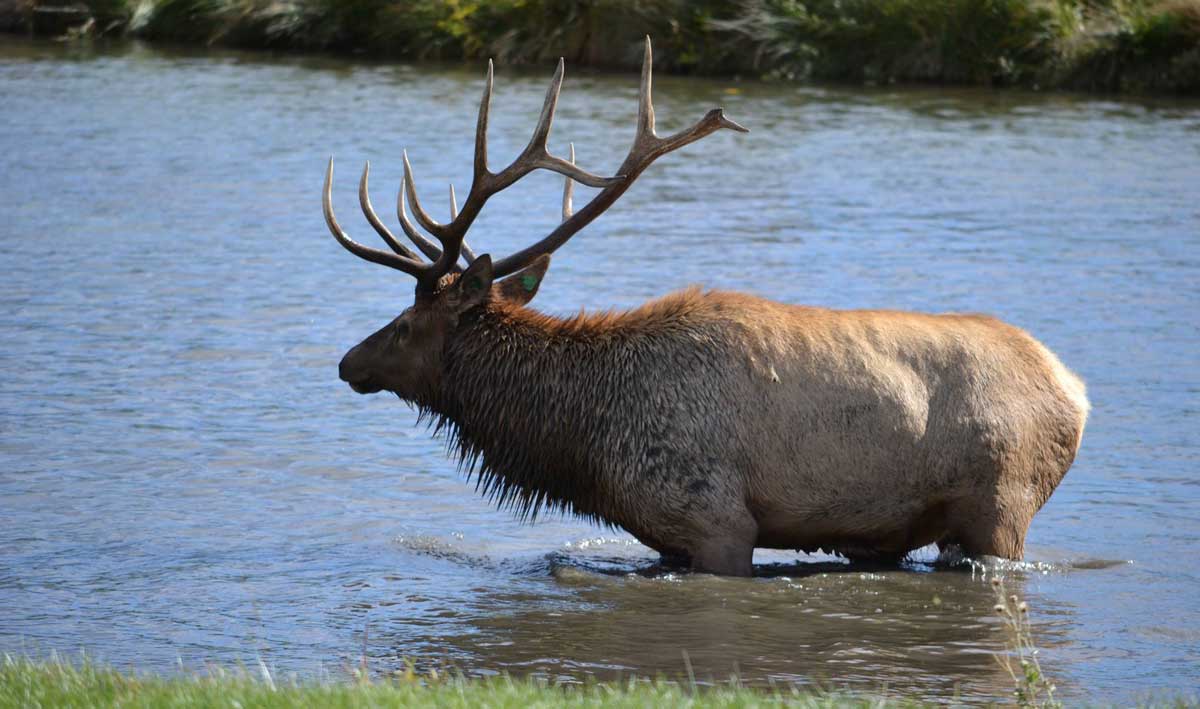All cervids are excellent swimmers. Hollow hair and rich fat help make elk buoyant and insulate them from the danger of hypothermia in frigid waters.
Yearly migration routes—particularly in mountainous areas—often require elk to cross creeks and rivers swollen from spring run-off. Calves only a few days old can navigate substantial rivers but may require days of coaxing before they’ll take the plunge. Reintroduced elk on Afognak Island in Alaska have been known to swim three miles to nearby Kodiak Island.
While being pursued by wolves, elk may retreat into waterways that largely protect them from predation. Native Americans, such as the Salish of Puget Sound, long took advantage of this tendency, driving elk into the sea with dogs and fire before clubbing them from canoes.
An elk’s natural endurance—from generations of fleeing predators in open country—allows it to power through long distances or rough waters. Of course, sometimes elk simply take a refreshing dip to cool off in the summer.
Photo c/o Faith Marlin
Elk NetworkAre Elk Good Swimmers?
Conservation | March 30, 2018

Latest Content
Restoring Elk Country – Wildlife-Friendly Fencing
Fencing helps outline ownership boundaries and keeps livestock from roaming onto other tracts of land, but it can also make it difficult or impossible for [...]
Call to Action: Stand Up for Wildlife Management & Greater Public Access in California
Below is a call-to-action email sent to the Rocky Mountain Elk Foundation’s California membership. The Rocky Mountain Elk Foundation supports two bills under consideration in [...]
Fix Our Forests Act Introduced in Senate
The Rocky Mountain Elk Foundation’s top legislative priority took another step forward when Senators John Curtis (R-Utah), John Hickenlooper (D-Colo.), Alex Padilla (D-Calif.) and Tim [...]